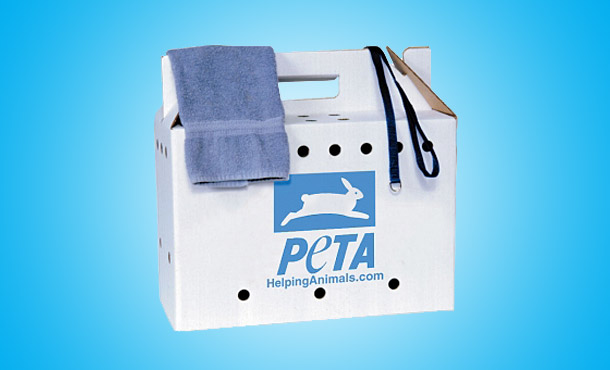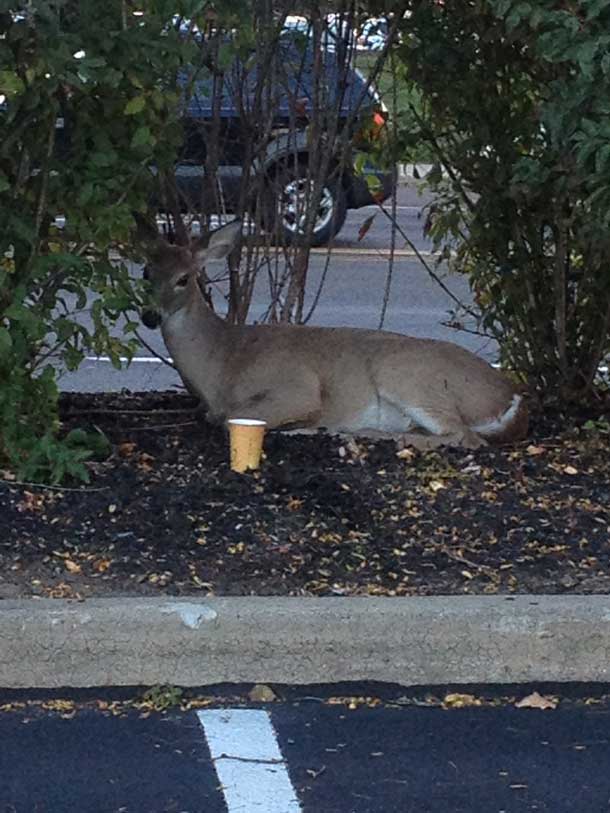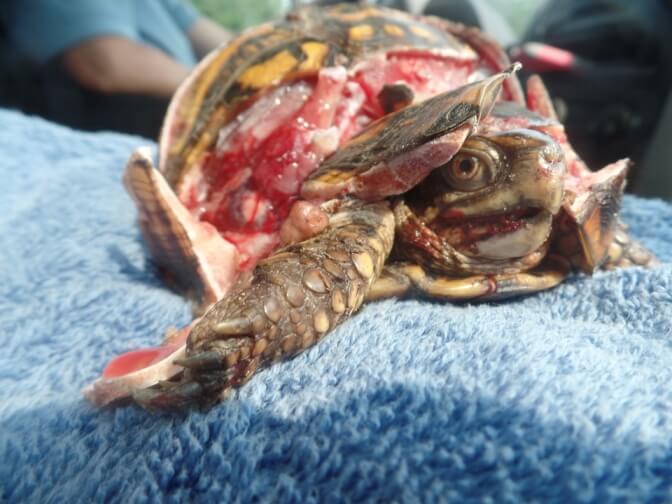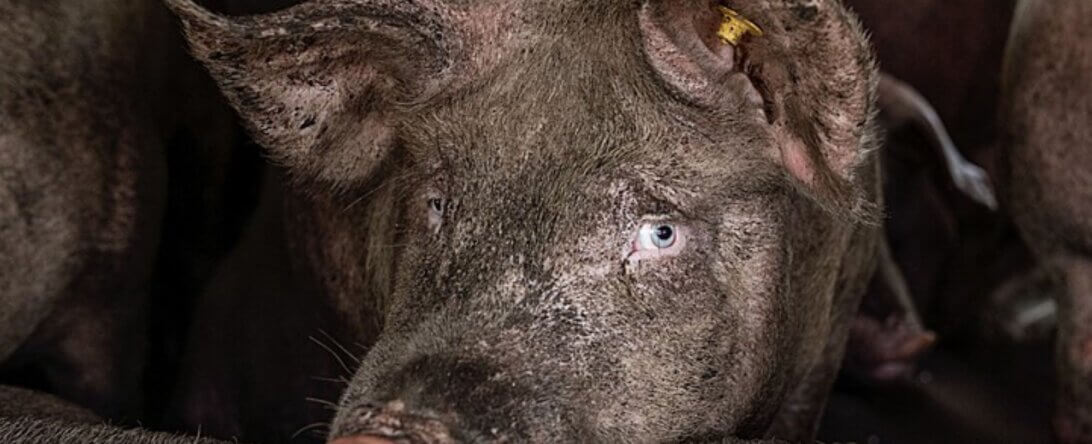How to Handle an Animal Emergency
Sometimes you come across an animal in need—and there’s no worse feeling than not knowing how to help! That’s why we’ve put together this animal emergency guide to help you safely assist any injured, lost, homeless, or suffering animals you may come across.
In any animal emergency, the most important thing is to remain calm and never leave the animal unattended.
Being Prepared
Keep an animal emergency kit in your car. You can purchase a PETA rescue kit. If you prefer to make your own, be sure to include the following items:
- Cat carrier, cardboard or plastic
- Nylon leash
- Towel or blanket
- Thick gloves
- Pop-top can of wet cat food and package of dog treats
- Gauze bandages to stop bleeding or to use as a muzzle
- Contact information for the local humane society, a wildlife rescue or rehabilitation center, trusted veterinarians, and 24-hour emergency veterinary services
- Paper and pen to jot down notes and information
How to Approach an Animal
Animals, whether they’re wild or domestic, are usually fearful of human intervention when they’re hurt or dying.
To avoid being bitten or causing additional distress and injury, follow these four rules when approaching animals:
- Move slowly and quietly, and stay as low to the ground as you can.
- Avoid eye contact, which can be seen as threatening. Keep your head down.
- Talk very softly to dogs and cats, and be as quiet as possible around wildlife.
- When you first approach, try to take whatever you may need to use with you so that you won’t have to go back for something and approach a second time.
If you spot a stray animal near a busy road, turn off your vehicle, put the hazard lights on, and get out of the car, closing the door quietly. Take your leash, cat food or treats, towel, and gauze (in case the animal is injured) with you.
If the animal runs, stop and kneel down or walk slowly in the opposite direction. Be patient—it might take a while to resolve the situation. Try to herd the animal toward a residential area, ideally into an empty, fenced-in yard, where you can close the gate to prevent escape. You’ll also want to let anyone on site know that there’s an animal in the yard and that you’re trying to help.
Domestic Animal Emergencies
Parked cars can be deathtraps for dogs. On a 78-degree day, the temperature inside a parked car can soar to 100 degrees in just minutes. Here’s what to do if you see a dog left alone in a hot car:
- Gather information. Note the car’s color, make, and model, and write down the license plate number or take a picture of it.
- Notify others. If there’s time, go into the nearest building and politely ask a manager to page the owner of the car immediately. BE PERSISTENT! Remember: It takes just minutes for a dog to sustain brain damage when the weather is hot. Time is of the essence.
- Monitor the dog. Go back outside and wait by the car. Don’t leave until the dog is safe!
- Call for help. If the owner doesn’t show up or doesn’t unlock the car, call animal control. If animal control can’t come immediately, call 911. And remember: If all else fails, do whatever it takes to save the animal’s life.
Animal Abuse
If you witness animal abuse, get out a pen and paper so that you can record details such as a license plate number and vehicle description or physical address. Call your local animal control agency or the police immediately. If they don’t respond promptly, call PETA.
Try to get evidence by taking photos or videos, find witnesses if possible, and provide authorities with a written description of the abuse that you witnessed. You can also go to your local magistrate or police commissioner to file a formal complaint.
If you see a chained dog, your best chance of improving his or her life is to befriend the owners and help them by, for example, offering to walk the dog. Of course, dogs who are being deprived of adequate shelter or who are injured, ill, or in poor physical condition should be reported to the proper agency right away.
Some jurisdictions have chaining restrictions or bans. Research your local laws, and notify authorities if you believe that violations are occurring.
If you find a stray dog, cat, or other companion animal, try to coax the animal to you. If he or she won’t come, put out some food to tempt the animal to come closer or get into the habit of visiting regularly in order to build trust. Borrow a humane box trap from your local animal shelter or purchase one from Tomahawk Live Trap.
If the animal is wearing tags, call the guardian’s number and arrange to take the animal home yourself so that you can assess the living conditions. If the animal looks emaciated or acts abused, call the authorities before returning the animal.
Don’t be afraid to take the animal to a well-run animal shelter. That’s usually the first place where people look for lost animal companions. To help reunite animals with their guardians, shelters can scan them for microchips and take photos to post on their websites, as well as handling any immediate health issues.
Animals who appear to be dead can be checked for signs of life by gently touching the edge of the eye. If they blink, they are still alive. Head for the nearest emergency veterinary clinic or animal shelter for life-saving treatment or euthanasia. If you go to a veterinary clinic, be prepared to pay for its services.
Injured Animals
If you find an injured wild animal, please stop to help if it’s safe to do so. If the animal can’t be moved or put into a carrier, cover him or her with a towel or blanket to help the animal stay calm until help arrives, and call 911 right away.
If the animal can be moved safely, try to place him or her in a covered box or carrier. Make sure it’s well ventilated and won’t get too hot or cold inside. Don’t offer any food or water. Transport the animal immediately to an animal control agency, veterinarian, or a local licensed wildlife rehabilitator.
Remember that when wild animals are severely injured, it’s not always fair to put them through the trauma of being handled by humans, the pain of surgery, and the long process of recovery in an alien environment, especially when so many of them don’t pull through. Those who don’t fully recover are doomed either to live in a cage in captivity for the rest of their lives or to be released with a physical disadvantage as they attempt to fend for themselves again in the wild.
Paying for euthanasia at a veterinary office or having this service performed at an animal shelter is often the best option. If you do this, be sure to stay with the animal to make sure that the suffering is quickly brought to an end.
In some areas and at certain times of year, turtles can frequently be found crossing roads, which puts them at great risk for injury. If you see a turtle on the road, get out of your car if it’s safe to do so, and help the turtle across the road without changing direction. Turtles know where they want to go, and they’ll turn back into traffic if you take them in the wrong direction.
Please don’t assume that turtles who have been injured or hit by a car are dead.
Turtles have a slow metabolism and can suffer with massive injuries for days or even weeks before finally dying. Test for a reaction by pinching a back toe or, if possible, by very gently touching the corner of the eyelid. Injured turtles should be contained and transported to a vet or animal shelter right away.
In the spring, baby animals are a common sight, but if they aren’t hurt or in immediate danger, they usually don’t need any help.
Don’t step in when it’s best to step aside.
Mom is probably gathering food nearby. Some mammals, such as deer and rabbits, will attend to their young only briefly at dusk and dawn. If you’re not sure if an animal is orphaned, call your state wildlife agency or a licensed wildlife rehabilitator for help.
Baby Birds
Fledgling (juvenile) birds on the ground who are learning to fly are often mistaken for orphaned baby birds. To determine if an animal needs assistance, ask yourself these questions:
- Are there bloody wounds, wet feathers, legs that aren’t bearing weight, drooping wings, or matted or persistently ruffled feathers?
- Is the bird lying on one side or on his or her back or having trouble walking?
- Is the bird’s body or head tilting to one side? Is there blood around the nostrils?
- Does the bird appear to be cold, or is he or she shivering?
- Is the bird out in the open with no trees or bushes nearby?
- Are there other animals, such as dogs or cats, stalking the bird?
- Is the bird a nestling (a baby bird who doesn’t yet have feathers and is too young to leave the nest)?
If the answer to all these questions is “No,” the bird should be left alone.
If the answer to any of the above questions is “Yes,” your assistance is probably needed. Put the bird in a covered box or carrier and transport him or her to an animal control agency, a veterinarian, or a local licensed wildlife rehabilitator immediately.
If you’re sure that an animal is orphaned, place him or her in a covered box or carrier that won’t get too hot or cold but is well ventilated. Don’t offer any food or water.
Don’t attempt to care for the animal yourself!
Please call your local animal control agency or wildlife rehabilitation center and transport the animal to someone who can provide immediate expert care.
Note: In most states, it’s illegal to possess wild animals without a license (and as most birds are federally protected, fines for possessing them are massive), because they require expert handling and care. Please contact an animal control agency or wildlife rehabilitation center and take the animal in for expert care immediately.
Remember to stay calm, stay safe, and call the police, animal control, or PETA for help. Thanks for caring about and helping animals in need!
Text peta2 to 30933 for ways to help animals, tips on compassionate living, and more!

Terms for automated texts/calls from peta2: http://peta.vg/txt. Text STOP to end, HELP for more info. Msg/data rates may apply. U.S. only.










